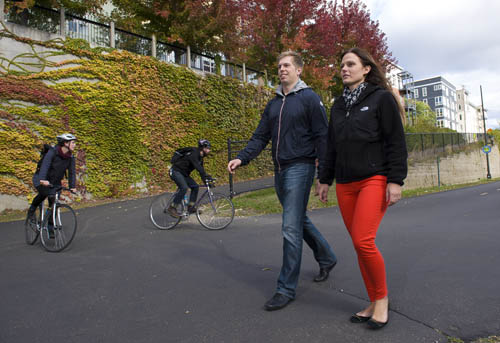In June, the Metropolitan Council will complete a key step on the path to updating the Transportation Policy Plan: an analysis of how the current transportation system is performing.
 Planners have gathered regional data from a variety of sources; data ranged from vehicle miles traveled and pavement conditions to transit ridership and freight transport bottlenecks. The Transportation System Performance Evaluation also compares our metro area’s transportation performance with our peer regions.
Planners have gathered regional data from a variety of sources; data ranged from vehicle miles traveled and pavement conditions to transit ridership and freight transport bottlenecks. The Transportation System Performance Evaluation also compares our metro area’s transportation performance with our peer regions.
“By analyzing how the current regional transportation system is performing, the Council and our state and local government partners can determine where best to make investments in the system in the coming decades,” said Amy Vennewitz, deputy director of the Council’s Metropolitan Transportation Services division.
The data collected in the evaluation include trends in the region’s population, employment and multi-modal travel patterns. Other information includes highway congestion and pavement conditions, transit ridership and performance, freight movement, and bicycle and pedestrian systems. The data helps determine whether our system is meeting the needs of people and what emerging trends need to be addressed.
Highlights from the 2016 evaluation:
-
Jobs increased by about 175,000 between 2010 and 2015.
-
The condition and performance of bridges and highways are adequate; the region is meeting targets for major highway pavement condition.
-
Bicycling and walking increased between 2007 and 2013; in Minneapolis, by 16%.
-
Transit use is growing, with light rail attracting new riders.
-
Our transit system ridership growth outpaced our peer region average since 2005 (we were No. 3 in growth), but since 2011, our rank has fallen as other regions have made greater transit investments (ranked 8th in growth between 2011 and 2015).
Transit, bicycling and walking on rise; drive-alone trips decline
Another highlight is the multi-modal use of transportation on a regional level. Overall, the total number of drive-alone trips has decreased. Trips by some other modes have increased since the previous performance evaluation in 2012:
-
Transit trips increased by 25% as a share of all trips.
-
Driving with a passenger increased by 4% as a share of all trips.
-
Riding a bicycle increased by 13% as a share of all trips.
-
Walking increased by 16% as a share of all trips.
Under state law, the Council resets its Transportation Policy Plan every 10 years, and updates it every 3 to 4 years in between. The performance evaluation is a collaborative process that involves the Council, the Minnesota Department of Transportation, the Metropolitan Airports Commission and other government agencies.